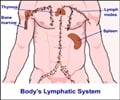Mode of Chemotherapy Delivery
- Intravenous chemotherapy - This is the most popular mode of drug deliverance. There are four methods of administering the drugs directly into the vein.
A small, thin tube or cannula may be inserted into a vein in the forearm or in the back of the hand. This may be uncomfortable or even painful but it will soon ease off. The cannula, once inserted, is securely taped to fix it in place. The drugs are given through a drip attached to the cannula. If there is discomfort of any kind the health personnels have to be intimated.
- Central line – A slim, flexible tube is inserted into a vein, close to the heart. The line is secured firmly to the chest where it can stay for many months. This negates the need for cannulas to be inserted every time chemotherapy is carried out. Normal activities can be pursued, but care must be taken to prevent the entry of water through the tube while bathing. A plastic dressing may be used for this purpose. Problems that are common to central lines are blockage and infection. The patient will be taught to flush the line with heparin, an anticoagulant. The health care experts should be consulted in case of discomfort or suspicious- looking changes on the skin.
- PICC line or the Peripherally Inserted Central Catheter line is a thin flexible tube inserted into a vein lodged in the crook of the arm. This line is threaded through till the other end of the tube finds a place in a vein close to the heart. This line functions, and is maintained, in the same way as the central line.
- Implantable port (also called a portacath) – An implantable port is a thin, soft plastic tube (catheter) with thin rubber disc. The tube is inserted into a vein and ends in an opening beneath the skin on the arm or chest. Needles are passed through the rubber disc to administer medicines into the vein or even to draw blood from the vein.
- Infusion pumps - Portable infusion pumps are also used to deliver certain types of chemotherapy over a period of time. These deliver a controlled quantity of chemotherapy into the bloodstream over a period of time. The pump is linked to a central or a PICC line and may be batterey -operated. The pumps are very handy and the patient, after being taught the modus operundi, may carry the pump anywhere in a pocket or a small bag.
The tube is threaded through the vein till the end is close to the heart
The tip of the tube comes out just beneath the crook of the elbow












